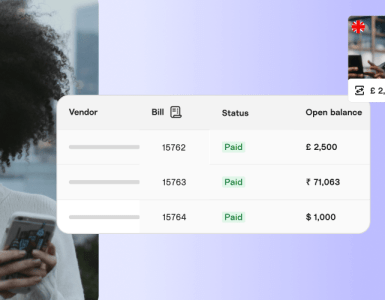Finding a VC or venture capitalist is significantly easier than finding angel investors. There are two reasons for this:
- It’s a VCs job to actively find good startup talent, so they have websites, attend events and are generally very visible in startup ecosystems.
- Generally they have larger portfolios than angels, so you hear their name from previous investment rounds of other startups.
The more successful VC partners that have been around for a while, like Sequoia or KPCB, get inundated with pitches, but they still have websites and lots of previous investments.
1. Finding venture capital firms in your existing network
The best source of finding investors is by leveraging your network. This saves you time as your friend or acquaintance is essentially pre-qualifying the investor for you, but there are two other important reasons: trust and knowledge.
Trust
Third-party validation from a trusted source goes a long way to getting the foot in the door.
Think about it, if you were an investor would you more likely speak to a startup that is introduced by one of your portfolio companies or from a cold pitch?
Obviously, you would choose the former. The other thing is the investor doesn’t want to look bad. If they ignored that introduction, it would do.
Trust works both ways. When you raise money from a VC, it will be like a marriage. You need to be able to trust them and they need to trust you as there will be highs and lows in your startup journey. If a friend is introducing you to a VC, it’s likely they’ll be good or they would warn you of anything bad.
Knowledge
You should be looking for the perfect VC, so it’s important to know whether the VC invests in your sector, whether they cut the right size checks for your round and whether they have a good track record. Your friend should be able to answer all of those questions. This saves you time.

2. Use online investor databases
There are specific websites and databases focused on connecting startups to investors. These sites make it a lot easier to find relevant investors and see if there are other intros you can get from your network.
AngelList
The name suggests AngelList has angel investors but it’s actually broader than that. Venture capital funds, grants, and angels are listed on AngelList. It was created in 2010 and has a mission to democratize the investment process.
Crunchbase
CrunchBase is a tool that was borne out of TechCrunch. It is a database of the startup ecosystem and lists investors, incubators, and start-ups. Apparently, it has millions of data points on startups across the ecosystem.
Twine Investor List
We manually curated a mega-investment list from a number of sources. The guys at TechStars, Seedcamp, and serialentreprenuers.co have all contributed with their own databases so we compiled one list to end all lists.
> Download the investor mega list here.

3. Make the most of networking opportunities
Following on from using your existing network, you should be expanding your network. Meeting other founders will help you be introduced to VCs but also partners from venture capital funds are often at events.
There are many startup conferences like WebSummit and SXSW. These conferences are a convergence of tech companies and investors. Those examples are huge, so you need to be prepared to hustle. There are small localized conferences that investors will go to. Keep an eye out on your target’s Twitter feed to see if they are attending.
Beyond conferences, you can check out Meetup to find startup-related groups in your area. You could also see if there are any local university alumni events that are relevant to your sector. Often investors will be scouting out University tech. Finally, see what events any local tech accelerators are running – if it’s a good accelerator they always attract investors.

4. Using LinkedIn and other social networks
The hardest way to find investors is by using social networks. If all those other avenues fail, you can always try:
- The network you will find most success is LinkedIn. Though pitching to investors via LinkedIn can work, you should try to use it as a research tool. Most venture partners and junior associates within a firm will have a LinkedIn profile.
- Twitter is the best way to learn about your VC target. You can see what sector interest they have and even engage with them when relevant. This will lower the barrier when you get an introduction.
- There are a number of Facebook groups that are startup focused. Though its not quite as business-oriented as LinkedIn, you can get advice from other founder. Even partners from VC firms can be found in some of these Facebook groups.
–
If you need more tips on raising, see the 10 things I learned while trying to raise $1,200,000.
This article is part of our startup investment series. You can read about the types of investors, where to find them, how to pitch, and an introduction to investment legals. Read more.



